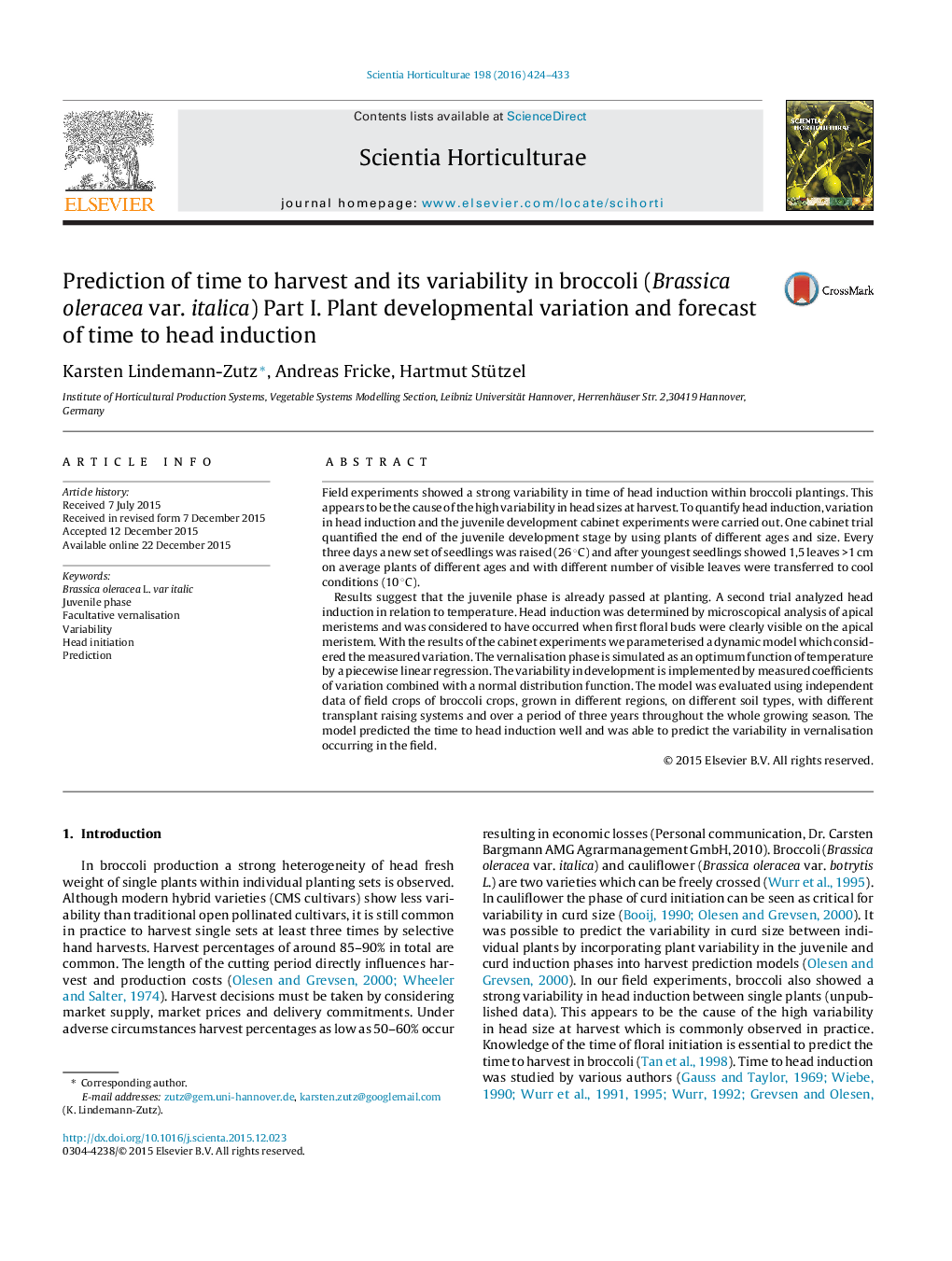| Article ID | Journal | Published Year | Pages | File Type |
|---|---|---|---|---|
| 6406622 | Scientia Horticulturae | 2016 | 10 Pages |
â¢Results showed that the juvenile phase is passed through at planting.â¢A dynamic model to predict time to heading based on temperature was developed.â¢A stochastic sub model was included to predict variability in head induction.â¢The model and the stochastic part were evaluated against independent field data.â¢Time to heading and variation could be predicted based on temperature data.
Field experiments showed a strong variability in time of head induction within broccoli plantings. This appears to be the cause of the high variability in head sizes at harvest. To quantify head induction, variation in head induction and the juvenile development cabinet experiments were carried out. One cabinet trial quantified the end of the juvenile development stage by using plants of different ages and size. Every three days a new set of seedlings was raised (26 °C) and after youngest seedlings showed 1,5 leaves >1 cm on average plants of different ages and with different number of visible leaves were transferred to cool conditions (10 °C).Results suggest that the juvenile phase is already passed at planting. A second trial analyzed head induction in relation to temperature. Head induction was determined by microscopical analysis of apical meristems and was considered to have occurred when first floral buds were clearly visible on the apical meristem. With the results of the cabinet experiments we parameterised a dynamic model which considered the measured variation. The vernalisation phase is simulated as an optimum function of temperature by a piecewise linear regression. The variability in development is implemented by measured coefficients of variation combined with a normal distribution function. The model was evaluated using independent data of field crops of broccoli crops, grown in different regions, on different soil types, with different transplant raising systems and over a period of three years throughout the whole growing season. The model predicted the time to head induction well and was able to predict the variability in vernalisation occurring in the field.
